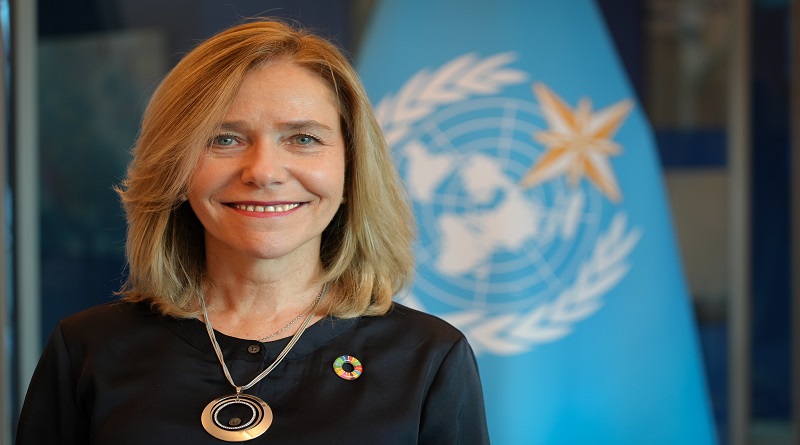Meteorological, hydrological infrastructure is the backbone of WMO
Technical experts from around the globe are meeting at World Meteorological Organisation (WMO) headquarters this week to agree how to strengthen the meteorological and hydrological infrastructure which is the backbone of weather forecasting, climate prediction and water resource management.
Graphic of a circular puzzle with five segments illustrating various environmental and technological themes, including a globe, cloud weather symbols, a gear mechanism, a grid pattern, and circular arrows.
On its opening day, WMO’s Infrastructure Commission (INFCOM) threw its support behind the flagship Early Warning for All initiative, which seeks to ensure that everyone is protected by life-saving early warnings by the end of 2027.
“The meteorological and hydrological infrastructure is the backbone of our value cycle, indispensable for comprehending natural processes and delivering essential services. Our community’s capacity to excel and advance both in science and service provision hinges on our ability to enhance our infrastructure, expand its reach and accessibility, bolster international data exchange, and integrate emerging technologies,” WMO Secretary-General Celeste Saulo told delegates.
“Our collective efforts have special focus and urgency – to address the challenges of climate change and to address the needs of the developing world. We are tasked with furnishing the requisite data and tools for adaptation and mitigation, ensuring equitable access for all members to essential data and support for delivering societal services,” she said.
The five-day meeting will assess progress in the development of the Global Basic Observation Network (GBON) and the associated Systematic Observation Financing Facility (SOFF). Together, these define what is scientifically and operationally needed and seek to provide financing and know-how for developing countries to close the gaps.
A central theme is the importance of open data policies to ensure that the entire global community benefits from scientific advances. The WMO Unified Data Policy will be considered, alongside new tools to implement it. In this respect, the WMO Information System (WIS) is evolving to WIS 2.0, which is the WMO data-sharing framework for the 21st century. WIS 2.0 is a platform harnessing modern technology to enable better data exchange and build capacity in developing countries in data discovery and retrieval capabilities, with the support of Global Information System Centres (GISC).
INFCOM will discuss the WMO Integrated Processing and Prediction System (WIPPS), which makes defined prediction products and services operationally available to the WMO community.
Another item on the agenda is the WMO Integrated Global Observing System (WIGOS), which provides the regulatory framework, guidance and tools, for the weather, water, climate and other environmental observing systems.
WMO Deputy Secretary-General Ko Barrett said that INFCOM decisions will instrumental in promoting WMO’s Earth system approach.
“This includes the proposal on the expanded World Weather Watch Programme, which incorporates application areas and domains spanning not only weather and climate, but water and related environmental applications. Here, an Earth Systems approach to observations and modelling of the atmosphere, hydrosphere, cryosphere, ocean, land surface and space, all play a critical role,” she said.
The new flagship initiative of the Global Greenhouse Gas Watch (G3W) will fill critical information gaps, striving to reduce the uncertainty in assessing the efficacy of climate action.
INFCOM will also discuss the state of the Global Climate Observing System (GCOS), which provides important climate information and indicators that can serve the early detection of critical tipping points in the climate system.



